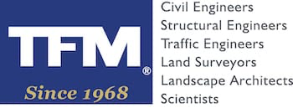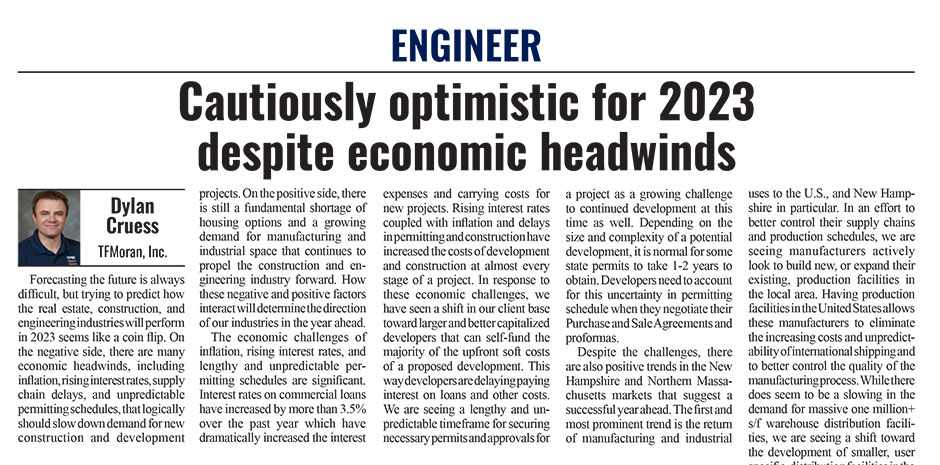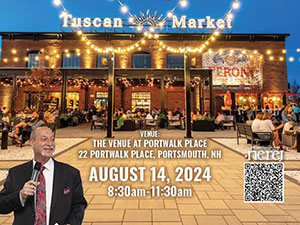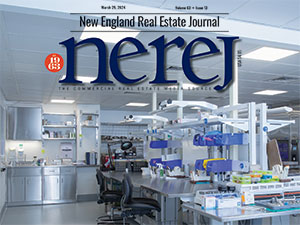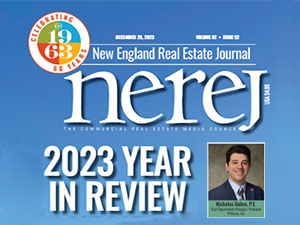TFMoran COO Dylan Cruess shared his point of view on recent industry trends in The New England Real Estate Journal‘s “2023 Forecast Spotlight“. The January 27 issue features 17 professionals in Construction and Real Estate, giving their predictions on what the upcoming year may bring for the industry.
It seems that our geographic area is in a positive economic cycle. There is an influx of manufacturing and other businesses looking to locate to New Hampshire and Northern Massachusetts.
Dylan Cruess
To read Dylan’s full forecast article, click here or continue reading below.

New England Real Estate Journal 2023 Forecast Spotlight
Cautiously Optimistic for 2023 Despite Economic Headwinds
By Dylan Cruess
Forecasting the future is always difficult, but trying to predict how the real estate, construction, and engineering industries will perform in 2023 seems like a coin flip. On the negative side, there are many economic headwinds, including inflation, rising interest rates, supply chain delays, and unpredictable permitting schedules, that logically should slow down demand for new construction and development projects. On the positive side, there is still a fundamental shortage of housing options and a growing demand for manufacturing and industrial space that continues to propel the construction and engineering industry forward. How these negative and positive factors interact will determine the direction of our industries in the year ahead.
The economic challenges of inflation, rising interest rates, and lengthy and unpredictable permitting schedules are significant. Interest rates on commercial loans have increased by more than 3.5% over the past year which have dramatically increased the interest expenses and carrying costs for new projects. Rising interest rates coupled with inflation and delays in permitting and construction have increased the costs of development and construction at almost every stage of a project. In response to these economic challenges, we have seen a shift in our client base toward larger and better capitalized developers that can self-fund the majority of the upfront soft costs of a proposed development. This way developers are delaying paying interest on loans and other costs. We are seeing a lengthy and unpredictable timeframe for securing necessary permits and approvals for a project as a growing challenge to continued development at this time as well. Depending on the size and complexity of a potential development, it is normal for some State permits to take 1-2 years to obtain. Developers need to account for this uncertainty in permitting schedule when they negotiate their Purchase and Sale Agreements and proformas.
Despite the challenges, there are also positive trends in the New Hampshire and Northern Massachusetts markets that suggest a successful year ahead. The first and most prominent trend is the return of manufacturing and industrial uses to the United States, and New Hampshire in particular. In an effort to better control their supply chains and production schedules, we are seeing manufacturers actively look to build new, or expand their existing, production facilities in the local area. Having production facilities in the United States allows these manufacturers to eliminate the increasing costs and unpredictability of international shipping and to better control the quality of the manufacturing process. While there does seem to be a slowing in the demand for massive 1,000,000+ sf warehouse distribution facilities, we are seeing a shift toward the development of smaller, user specific, distribution facilities in the 100,000 – 250,000 sf range.
Another trend that doesn’t seem to be slowing down in 2023 is the demand for housing of all types, but more specifically multifamily apartment buildings. In the greater Manchester, NH area, our firm has more than 1,000 units in various stages of planning and design. These new projects are in addition to the thousands of multifamily units that have already been constructed over the past several years in Southern New Hampshire and Northern Massachusetts. I recently read one estimate that New Hampshire still has a need for 20,000 additional housing units. Despite the increases in construction costs, we are being told by our housing developers that rents are increasing fast enough that new projects are still viable.
It seems that our geographic area is in a positive economic cycle. There is an influx of manufacturing and other businesses looking to locate to New Hampshire and Northern Massachusetts. New employers will lead to new jobs, which will lead to new residents moving to the area, which will lead to increased demand for housing, retail, restaurants, and other ancillary services, which will then make our region more attractive to new businesses looking to relocate to the area.
All things considered, I am optimistic for the real estate, construction, and engineering industries for 2023. At some time in the future, the economic headwinds and uncertainty will slow down development, but for the foreseeable future I believe the positive trends will lead the way to a busy and successful year ahead.
